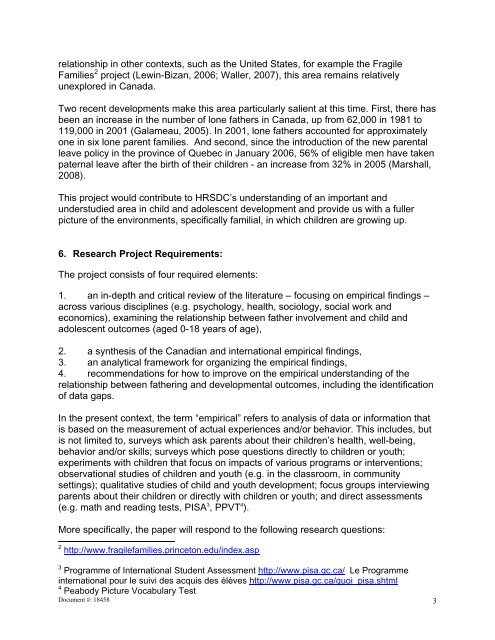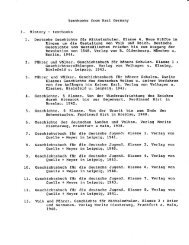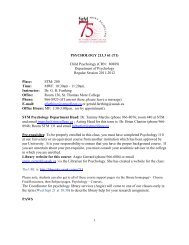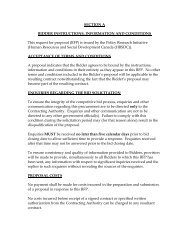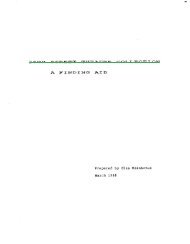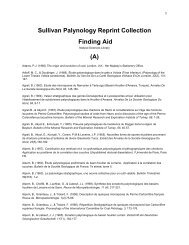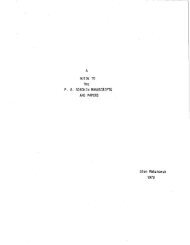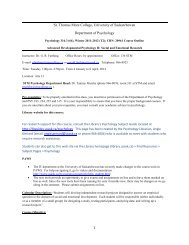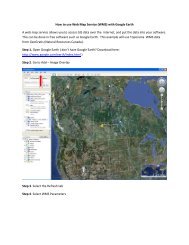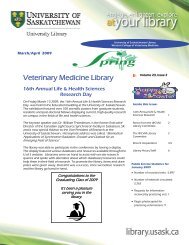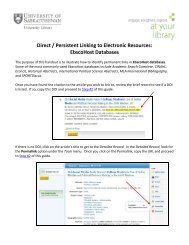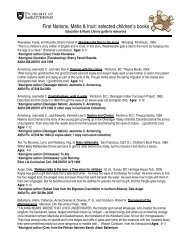Father involvement and child and adolescent ... - University Library
Father involvement and child and adolescent ... - University Library
Father involvement and child and adolescent ... - University Library
You also want an ePaper? Increase the reach of your titles
YUMPU automatically turns print PDFs into web optimized ePapers that Google loves.
elationship in other contexts, such as the United States, for example the Fragile<br />
Families 2 project (Lewin-Bizan, 2006; Waller, 2007), this area remains relatively<br />
unexplored in Canada.<br />
Two recent developments make this area particularly salient at this time. First, there has<br />
been an increase in the number of lone fathers in Canada, up from 62,000 in 1981 to<br />
119,000 in 2001 (Galameau, 2005). In 2001, lone fathers accounted for approximately<br />
one in six lone parent families. And second, since the introduction of the new parental<br />
leave policy in the province of Quebec in January 2006, 56% of eligible men have taken<br />
paternal leave after the birth of their <strong>child</strong>ren - an increase from 32% in 2005 (Marshall,<br />
2008).<br />
This project would contribute to HRSDC’s underst<strong>and</strong>ing of an important <strong>and</strong><br />
understudied area in <strong>child</strong> <strong>and</strong> <strong>adolescent</strong> development <strong>and</strong> provide us with a fuller<br />
picture of the environments, specifically familial, in which <strong>child</strong>ren are growing up.<br />
6. Research Project Requirements:<br />
The project consists of four required elements:<br />
1. an in-depth <strong>and</strong> critical review of the literature – focusing on empirical findings –<br />
across various disciplines (e.g. psychology, health, sociology, social work <strong>and</strong><br />
economics), examining the relationship between father <strong>involvement</strong> <strong>and</strong> <strong>child</strong> <strong>and</strong><br />
<strong>adolescent</strong> outcomes (aged 0-18 years of age),<br />
2. a synthesis of the Canadian <strong>and</strong> international empirical findings,<br />
3. an analytical framework for organizing the empirical findings,<br />
4. recommendations for how to improve on the empirical underst<strong>and</strong>ing of the<br />
relationship between fathering <strong>and</strong> developmental outcomes, including the identification<br />
of data gaps.<br />
In the present context, the term “empirical” refers to analysis of data or information that<br />
is based on the measurement of actual experiences <strong>and</strong>/or behavior. This includes, but<br />
is not limited to, surveys which ask parents about their <strong>child</strong>ren’s health, well-being,<br />
behavior <strong>and</strong>/or skills; surveys which pose questions directly to <strong>child</strong>ren or youth;<br />
experiments with <strong>child</strong>ren that focus on impacts of various programs or interventions;<br />
observational studies of <strong>child</strong>ren <strong>and</strong> youth (e.g. in the classroom, in community<br />
settings); qualitative studies of <strong>child</strong> <strong>and</strong> youth development; focus groups interviewing<br />
parents about their <strong>child</strong>ren or directly with <strong>child</strong>ren or youth; <strong>and</strong> direct assessments<br />
(e.g. math <strong>and</strong> reading tests, PISA 3 , PPVT 4 ).<br />
More specifically, the paper will respond to the following research questions:<br />
2 http://www.fragilefamilies.princeton.edu/index.asp<br />
3 Programme of International Student Assessment http://www.pisa.gc.ca/ Le Programme<br />
international pour le suivi des acquis des élèves http://www.pisa.gc.ca/quoi_pisa.shtml<br />
4 Peabody Picture Vocabulary Test<br />
Document #: 18458<br />
3


